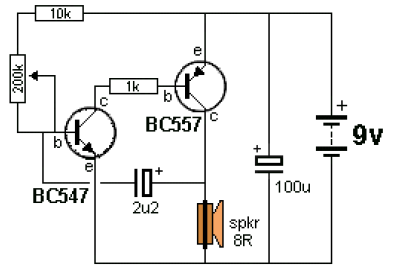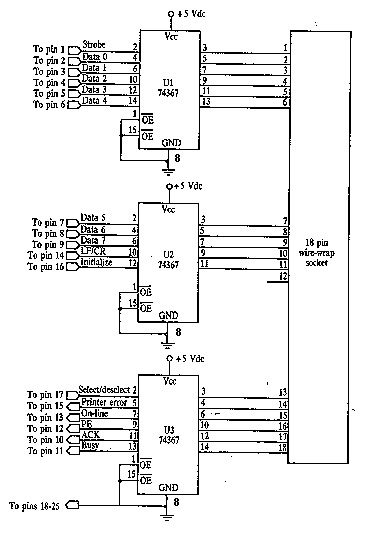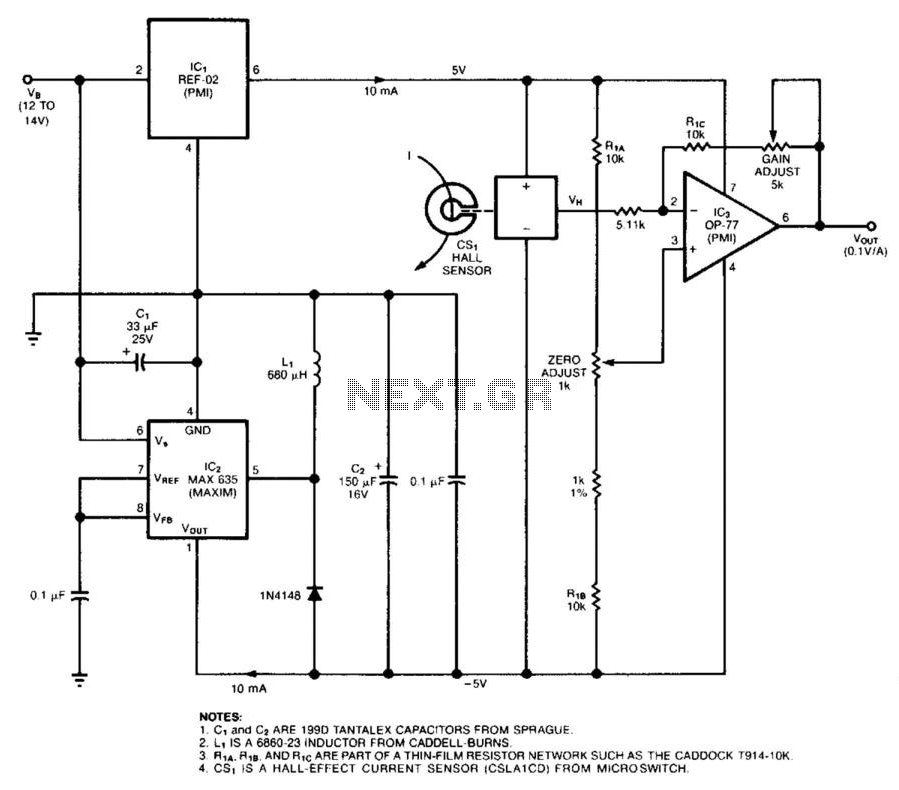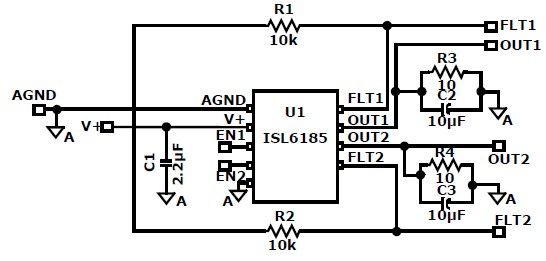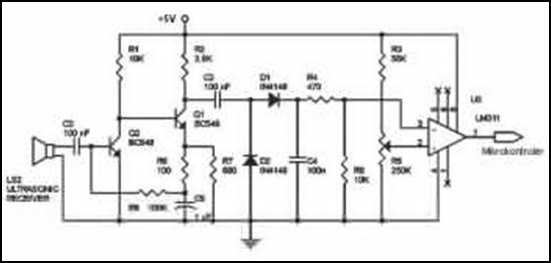
An Add-On Current Limiter For Your PSU circuit

This circuit allows setting a limit on the maximum output current from a power supply unit (PSU). It is particularly useful when powering up a project for the first time or conducting a soak test. By establishing an upper limit on the current from the PSU, the circuit protects both the power supply and any connected devices. It serves as a simple and cost-effective alternative to a current limiting power supply. The basic circuit is illustrated in the first schematic. Two diodes regulate the maximum voltage on the base of the power transistor to approximately 1.4V, which results in a maximum voltage across resistor R2 of about 0.7V. For a 10-ohm R2, the maximum emitter current is approximately 70mA. Since the collector current is nearly equal to the emitter current, the output terminals cannot provide more than 70mA. Exceeding this limit causes the output voltage to drop. A BD131 transistor is used, although any NPN power transistor with similar or better specifications is suitable. The choice of a 70mA maximum is arbitrary; adjusting R2 allows for setting a different current limit, as indicated in the diagram. It is important to note that increasing the current will also increase the power dissipation. The second schematic introduces additional features. An LED can replace a voltmeter on the output; if the output voltage decreases, the LED will dim or turn off, indicating excessive load. For unattended operation, such as during a soak test, a buzzer can be included to sound an alarm if the output voltage drops by 2 volts or more. The layout provided corresponds to the second schematic but is adaptable. If the LED feature is not desired, omit the LED and R3. If the alarm feature is unnecessary, exclude D3, D4, D5, R4, R5, and Q2. The heatsink consists of a folded aluminum strip, approximately 2mm thick, 6cm long, and 3cm tall. If the maximum current from the limiter circuit is significantly increased, a larger heatsink may be required.
The circuit operates on the principle of current limiting through the use of a power transistor, which is controlled by the voltage across a resistor (R2). The diodes in the circuit ensure that the base-emitter voltage of the transistor does not exceed safe levels, thereby protecting the transistor from damage due to excessive voltage. The choice of a 10-ohm resistor for R2 is a practical example, but the design allows for flexibility in selecting the resistor value to achieve desired current limits.
The LED indicator provides a visual cue for the user, making it easy to monitor the status of the output without needing additional measurement tools. This feature enhances the usability of the circuit, especially in experimental setups where quick visual feedback is beneficial.
The alarm function adds an important layer of safety for unattended operations, alerting the user to potential issues that may arise during testing. The inclusion of the buzzer circuit ensures that any significant drop in output voltage will trigger an audible warning, prompting immediate attention to the setup.
The heatsink design is crucial for thermal management, particularly when higher currents are involved. The specified dimensions of the aluminum strip are suitable for moderate power dissipation, but careful consideration should be given to the thermal requirements based on the maximum current the circuit is expected to handle. In high-current applications, a larger or more efficient heatsink may be necessary to prevent overheating and ensure reliable operation.
Overall, this circuit provides a practical solution for current limiting in various electronic applications, combining essential features with the flexibility to adapt to specific user needs.This circuit allows you to set a limit on the maximum output current available from your PSU. It`s very useful when you power-up a project for the first time - or carry out a soak-test. By setting an upper limit on the current available from your PSU - you can protect both your power supply - and any device connected to it. It offers a simple and cheap alternative to the Current Limiting Power Supply The basic circuit is shown in the first schematic. The two diodes fix the maximum possible voltage - on the base of the Power Transistor - at about 1v4.
This means that the maximum possible voltage across R2 is fixed at about 0v7. If R2 is 10 ohms - then the maximum possible emitter current is (0v7 G· 10) about 70mA. Since the collector current is always more or less equal to the emitter current - you cannot draw more than 70mA from the output terminals. If you try to do so - the output voltage will fall. I used a BD131 because that was what I had available. However, any NPN Power Transistor with a similar - or better - spec should work fine. I had no special reason for choosing a 70mA maximum. If you want to set a different current limit - change the value of R2. The formula is in the diagram. Always remember that if you increase the current - you`ll also increase the watts. The second schematic has a couple of added features. If you don`t want to use a voltmeter on the output - use an LED instead. If the output voltage falls - the LED will dim or extinguish completely. This is enough to let you know that the load on the output is excessive. Where the Current Limiter is to be left unattended for any length of time - say during a soak-test - the Buzzer is useful.
Should a problem develop - and the output voltage fall by 2-volts or more - the circuit will sound the alarm. The layout provided is for the second schematic - but it`s flexible. If you don`t want the LED feature - just leave out the LED and R3. If you don`t want the alarm feature - leave out D3, D4, D5, R4, R5 & Q2. The heatsink is a folded strip of aluminium about 2mm thick, 6cm long and 3cm tall. If you increase significantly the maximum current available from the limiter circuit - you`ll probably need to increase the size of the heatsink as well.
🔗 External reference
The circuit operates on the principle of current limiting through the use of a power transistor, which is controlled by the voltage across a resistor (R2). The diodes in the circuit ensure that the base-emitter voltage of the transistor does not exceed safe levels, thereby protecting the transistor from damage due to excessive voltage. The choice of a 10-ohm resistor for R2 is a practical example, but the design allows for flexibility in selecting the resistor value to achieve desired current limits.
The LED indicator provides a visual cue for the user, making it easy to monitor the status of the output without needing additional measurement tools. This feature enhances the usability of the circuit, especially in experimental setups where quick visual feedback is beneficial.
The alarm function adds an important layer of safety for unattended operations, alerting the user to potential issues that may arise during testing. The inclusion of the buzzer circuit ensures that any significant drop in output voltage will trigger an audible warning, prompting immediate attention to the setup.
The heatsink design is crucial for thermal management, particularly when higher currents are involved. The specified dimensions of the aluminum strip are suitable for moderate power dissipation, but careful consideration should be given to the thermal requirements based on the maximum current the circuit is expected to handle. In high-current applications, a larger or more efficient heatsink may be necessary to prevent overheating and ensure reliable operation.
Overall, this circuit provides a practical solution for current limiting in various electronic applications, combining essential features with the flexibility to adapt to specific user needs.This circuit allows you to set a limit on the maximum output current available from your PSU. It`s very useful when you power-up a project for the first time - or carry out a soak-test. By setting an upper limit on the current available from your PSU - you can protect both your power supply - and any device connected to it. It offers a simple and cheap alternative to the Current Limiting Power Supply The basic circuit is shown in the first schematic. The two diodes fix the maximum possible voltage - on the base of the Power Transistor - at about 1v4.
This means that the maximum possible voltage across R2 is fixed at about 0v7. If R2 is 10 ohms - then the maximum possible emitter current is (0v7 G· 10) about 70mA. Since the collector current is always more or less equal to the emitter current - you cannot draw more than 70mA from the output terminals. If you try to do so - the output voltage will fall. I used a BD131 because that was what I had available. However, any NPN Power Transistor with a similar - or better - spec should work fine. I had no special reason for choosing a 70mA maximum. If you want to set a different current limit - change the value of R2. The formula is in the diagram. Always remember that if you increase the current - you`ll also increase the watts. The second schematic has a couple of added features. If you don`t want to use a voltmeter on the output - use an LED instead. If the output voltage falls - the LED will dim or extinguish completely. This is enough to let you know that the load on the output is excessive. Where the Current Limiter is to be left unattended for any length of time - say during a soak-test - the Buzzer is useful.
Should a problem develop - and the output voltage fall by 2-volts or more - the circuit will sound the alarm. The layout provided is for the second schematic - but it`s flexible. If you don`t want the LED feature - just leave out the LED and R3. If you don`t want the alarm feature - leave out D3, D4, D5, R4, R5 & Q2. The heatsink is a folded strip of aluminium about 2mm thick, 6cm long and 3cm tall. If you increase significantly the maximum current available from the limiter circuit - you`ll probably need to increase the size of the heatsink as well.
🔗 External reference
